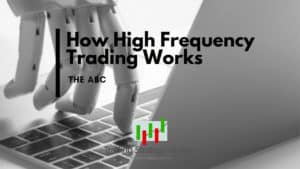Mastering Technical Analysis in Forex Trading: Key Indicators and Patterns

As much as forex trading is profitable, it also presents unique challenges that require the proper knowledge and skillset for long-term success. Part of this includes equipping yourself with the right technical analysis skills, which involves studying price patterns through indicators to predict how the price will move.
A standard and free forex trading course will keep you in the loop on the basics of technical analysis. But you must also master the art of utilizing the key indicators and patterns that help traders gain a competitive edge.
Key Indicators in Forex Trading
Indicators in technical analysis are the mathematical calculations based on volume, price, and open interest data. All these provide insights into potential points where the market may reverse, gain momentum, or trend. Here is a look at some of the indicators used in forex trading.
Moving Averages
Moving averages are indicators used to smooth out price data and identify trends. The two most common types are the simple moving average (SMA) and the exponential moving average (EMA). The SMA calculates the average range of prices by the number of periods in that range, helping determine if an asset will keep a bearish or bullish trend. It has a slower reaction to price movements compared to EMA.
EMA is a weighted moving average that exerts more weight on recent prices. Its primary purpose is to identify potential reverse points and trends, and it is best used for short-term trading since it is more responsive to current price action. When these two cross, it signifies a potential entry or exit point.
Relative Strength Index
This momentum oscillator measures how price movements change and at what speed. Its range is from 0 to 100 and is commonly used to spot conditions of overbuying or overselling. A comparison of an asset’s average gains and losses over time is done to calculate RSI. Any reading above 70 signifies overbuying, while readings below 30 signify overselling. A balance between bullish and bearish positions is denoted by a reading of 50.
RSI is used to provide short-term signals for buying and selling. Signals with a reading of 30 and below generate buy signals, indicating an undervalued or oversold condition. On the contrary, signals with a reading of 70 and above generate sell signals, indicating an overvalued or overbought condition.
Stochastic Oscillator
The stochastic oscillator compares the current closing price to the price range over a given period. The ideal length of time is 14 days, but it can always be adjusted depending on the analysis. It is calculated by subtracting the low for the period from the current closing price, dividing the total range for the period, and multiplying it by 100.
Readings above 80 signify overbuying conditions, while those below 20 show overselling conditions. It is beneficial to traders since it helps them identify reversal points in oversold or overbought positions.
Crucial Chart Patterns in Forex Trading
Chart patterns are visual representations of how price moves. They function as signals of how prices might move in the future. Here is a look at some of them.
- Head and shoulders are reversal patterns that signify a potential change in the prevailing trend. It is made up of a higher peak and two lower peaks.
- Double top and double bottom is another reversal pattern whereby a double top comprises two peaks, and a double bottom consists of two troughs.
- Flags and pennants are continuation patterns that occur after a substantial price movement. Flags assume a rectangle shape, while pennants assume the shape of small symmetrical triangles.
- Triangles are consolidation patterns that occur as converging trendlines. They can be either descending, ascending, or symmetrical.
Final Thoughts
Technical analysis is crucial to forex trading, helping traders execute successful trades. By utilizing the key indicators and chart patterns in conjunction with risk management, you are bound to become a proficient forex trader equipped to navigate the complexities of the global forex market.






